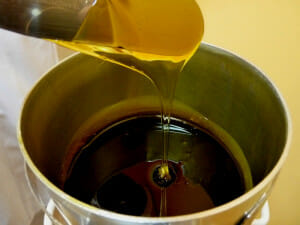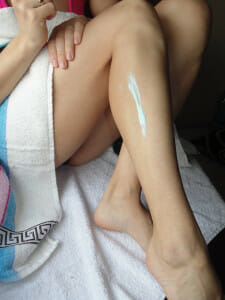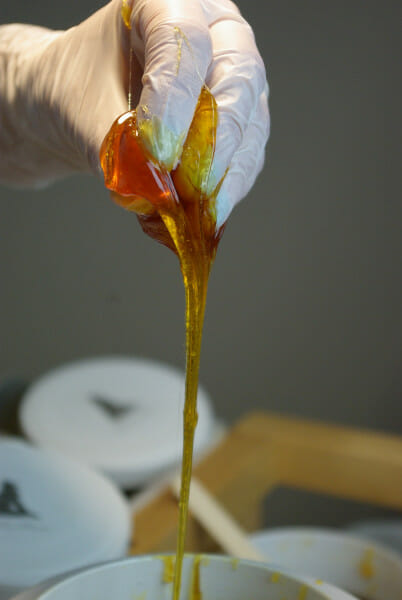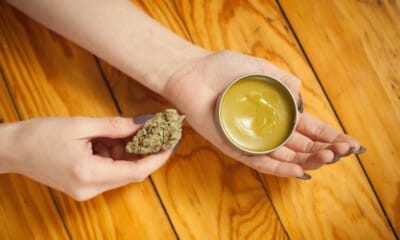Sugar Wax: Its Benefits, Method Of Using It, And Why Pros Plead You Not To Make It At Home
There’s no such thing as a “perfect” hair removal method. Waxing is painful, shaving leaves you with stubble and ingrowns, and laser often costs as much as a downpayment on a New York City apartment (not to mention that it’s still not effective on all skin tones). No matter how you slice it, if you want smooth, hairless skin, the most common practices have mandated that you had to suffer for it. But according to pros, there’s one method you can try at home that’s as close to “perfect” as hair removal gets, and it comes in the form of a sugar wax. Keep reading to learn more about what sugar waxing is and why pros are begging you not to try making your own sugar wax recipe at home.
What is sugar wax?
“Sugaring wax is a natural wax made of three simple ingredients: sugar, water, and lemon juice,” says Salome Sallehy, founder and President of Sugar Sugar Wax. Though the ingredients are simple, the process of mixing them together can vary greatly, which is why pros recommend sticking with pre-made formulas instead of trying to make it for yourself.
Old-school sugar wax had a liquid, honey-like consistency (similar to that of traditional wax), but newer, more elegant formulas are thicker and fall into the category of “hard wax,” which can be peeled off without the use of a paper strip. “This type of sugaring wax is applied by hand, and the formula holds together well enough to be flicked off and reused,” says Sallehy. “This application is far gentler on the skin and more effective in removing the hair in a way that doesn’t damage the follicles.”

Image by flaviasaad0 via Pixabay
The benefits of sugar waxing
When it comes to choosing a hair removal method, you’re usually faced with a “pick your poison” situation in which you have to choose between cuts and ingrowns (shaving), pain and damaged skin (waxing), or spending thousands of dollars (laser). “With sugaring, you don’t have any of those challenges,” says Sallehy. Here are some benefits:
1. Painless
Sugar waxing’s biggest check in the “pro” column comes from the fact that, unlike other waxing methods, it’s relatively painless for hair removal. “The sugar and citric acid from the lemon juice form a bond that strictly adheres to dead skin and hair, so it’s not pulling on live skin cells,” says Sallehy. This makes it painless and gentle on the skin, meaning no reaction or irritation like you’d get from traditional waxing.” It’s fine to use on sensitive skin, so if you can’t handle traditional wax, sugar wax is a solid alternative.
2. Good for skin
Sugar wax comes with a lot of skin benefits. Firstly it’s non-irritating and acts as a gentle exfoliator as well. “Whether you’re using it on your face or body, this mechanism also makes sugaring a great skin exfoliator as well, which is why you don’t get ingrown hairs with sugaring,” says Sallehy. Sugar not only makes your skin smoother and hairless after waxing but is also the least harsh exfoliator as compared to other physical exfoliants.
3. Lasts up to 8 weeks
Because sugar wax is removed in the same direction that your hair grows in (as opposed to regular wax, which is ripped in the opposite direction), pros say hair purportedly grows back slower. “This practice results in less than 10 percent of breakage in the hair, which makes regrowth time on average six to eight weeks,” says Sallehy. Since the hair is being treated so gently it grows back finer and thinner, and over time, some of the hair won’t grow back at all. Another perk: You don’t have to wait for the hair to grow out for sugar waxing to be effective, so there’s no need to deal with those awkward in-between weeks of peach fuzz.
Why you shouldn’t make a DIY sugar wax recipe at home
Just because there are a lot of DIY sugar wax recipes on the Internet doesn’t mean any of them are worth using. “I’ve seen hundreds of DIY sugaring recipes online and knowing what I know about what it takes to make the formula work, I can tell you that they’re quite a ways off,” says Sallehy. “If you’re going to make your own wax at home, you’ll likely get the honey-like runny consistency that you’ll need strips and spatulas for, so you probably won’t see all of the benefits and it’ll be a lot more like waxing at home.” And as Amber Johnson, a California-based aesthetician known as the “Skin Whisperer” puts it, “making it at home is a disaster.” So leave the product formulations to the pros, and opt for something like Sugar Sugar Wax Glow Goop ($36) to get the job done.
How to use sugar wax
1. Warm up the wax
Before you apply the wax to your skin, you’ll want to be sure it’s the right temperature to deliver optimal results. “When you warm it up slightly, you want it to be just soft enough for you to dig in with a bit of effort and scoop out a lump,” says Sallehy. “A lot of people might warm it up too much thinking that the consistency is supposed to be like traditional wax, but if you can manage to dig your fingers into the jar, it’s warm enough.” Keep in mind that it will get warmer every time you dip into the jar, so a little bit of stiffness at the beginning of your wax session is a good thing.

Image by Denys Tarasov via Pixabay
2. Make sure the area you’re waxing is completely dry
Sugar wax is a water-soluble wax, hence, it won’t be effective on wet skin because it will not stick to it. “The skin’s natural reaction to hair removal is to start perspiring,” says Sallehy. Firstly dry your skin with help of a towel and then to dry it completely apply a baby powder so the whole process can be done more effectively on dry skin.
3. Try the “triple pull technique”
When it comes time to actually wax, you’ll want to apply the product to your skin and implement the triple pull technique to remove it, which Sallehy calls “the key to success.” “When you apply the sugaring wax, pull on it against the direction of the hair growth and go over the same area three times before you quickly flick it off [in the direction of the hair growth],” says Sallehy. Johnson adds that it’s “all about the flick of the hand,” so you may need to practice a few times to get it right. And if the hair doesn’t come off in one swipe? Not to worry—since the wax is so gentle, you can simply go over the area as many times as you need until it’s smooth and hairless.
For more inspiration on at-home hair removal, check out the video below.
Want even more beauty intel from our editors? Join Well+Good’s Fine Print Facebook group (and follow us on Instagram) for must-know tips and tricks.
Featured Image by Michael Lotze via Pixabay
















